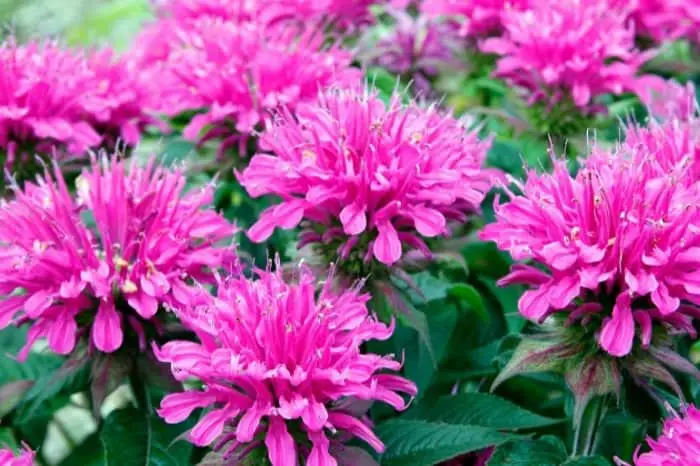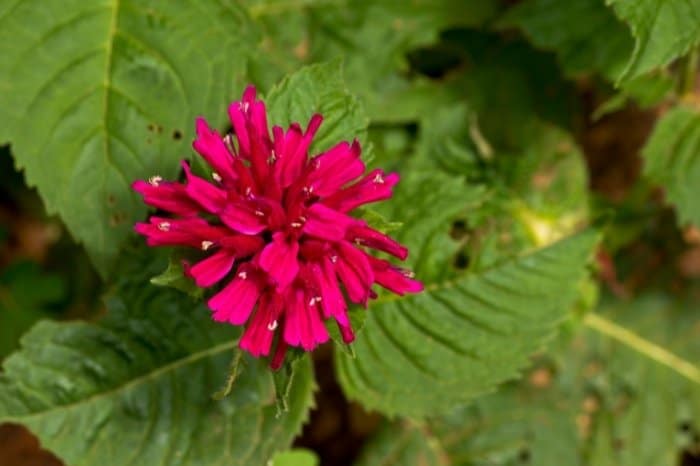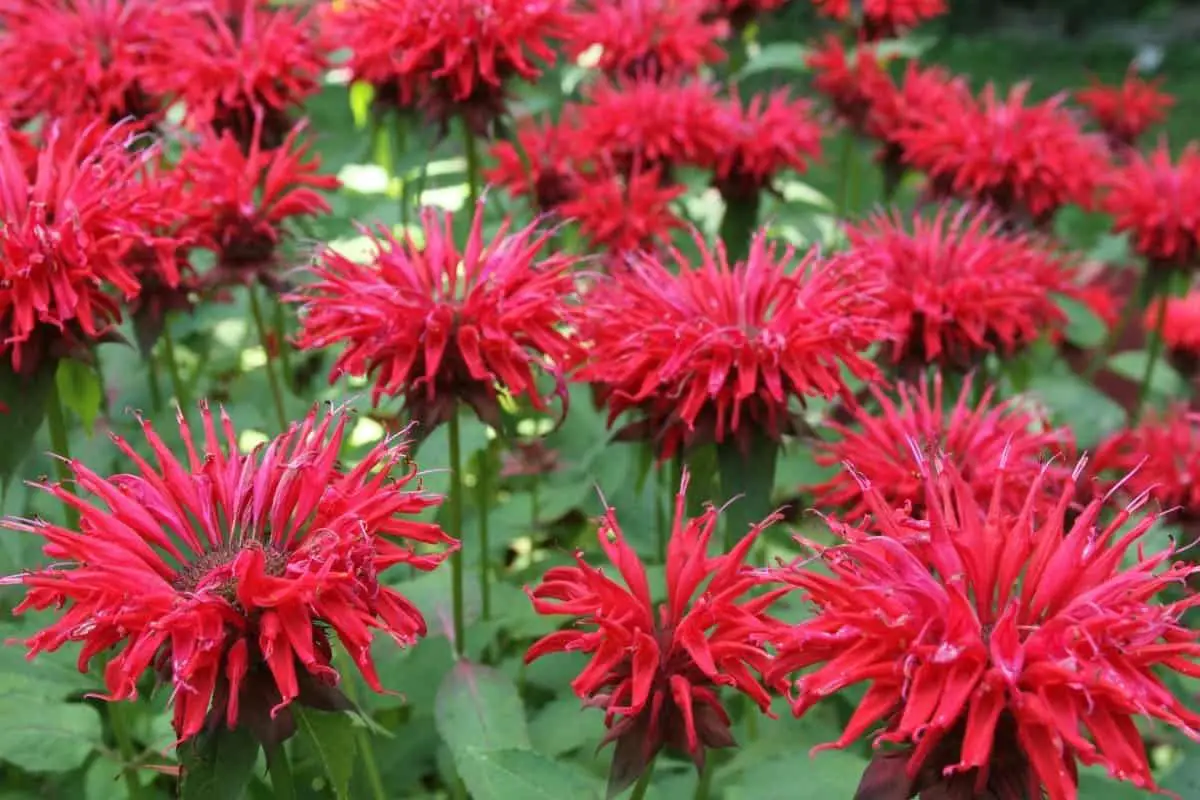Last Updated on February 14, 2022 by
How to grow bee balm from seed is an art that every gardener ought to learn to cultivate these magnificent blooms with ease.
These flowers fill your garden and home with life because they are lovely, medicinal, and edible. No wonder bees and birds love them too! Ask any gardener who grows these flowers, and they will happily tell you they can’t wait to watch a bee balm bud opening into glorious scarlet bloom.
Growing Bee Balm Plants is easy and extremely rewarding. Also known as Monarda plants, they are technically categorized as herbs though used in flower gardens for many decades.
Due to their beautiful nature, you are likely to spot the bee balm plants growing at zoos, theme parks, or other public attractions. Their flowers attract an array of beneficial insects to your garden for a great ecosystem.
Most landscapers also use these versatile plants because they are easy to maintain and do not require much attention. Let’s learn how to plant bee balm seeds and how to propagate these unique flowers.
Some Facts About Bee Balm Plants
- There are many types of bee balm plants.
- Bee Balm plants produce gorgeous flowers that open up to 2 or 3 inches wide.
- They are available in many colors like pink, red, white, lilac, mauve, and purple.
- They grow as tall as 10 to 48 inches.
- These plants are popularly chosen for use in many beneficial gardens and butterfly gardens.
- The flowers attract an array of insects like bumblebees, honeybees, butterflies, hummingbirds, and ladybugs.
- The majority of the bee balm plants are perennials

- They have a robust root system that allows them to regrow each spring season
- Some varieties are characterized as annuals like lemon mint
- They are commonly grown by home gardeners
- They have perfect erect stems that make them ideal for cutting
- The flowers can be enjoyed in bouquets and floral arrangements
- Both the flowers and leaves of the bee balm plant are edible
- The flowers can be used in cakes, salads, and preservatives
- The leaves can be crushed and used as a mint substitute or in tea
Check Out More Beautiful Flowers by Clicking Here:
How To Grow Bee Balm From Seed
It is important to note that bee balm plants can be established from seeds sowed indoors or outdoors.
Directly Grow Bee Balm Seed Outdoors
Before you learn how to do it, you need to know that sowing your seeds directly outdoors poses a bit of a risk. Consider sowing them on a day that is calm and free of high winds.
If sowing your bee balm seeds directly outdoors, first prepare the sowing area by removing all the unwanted matter and other plant life.
Seed Needs, Wild Bee Balm (Monarda fistulosa) Twin Pack of 400 Seeds Each
Dig up the earth to get new soil or replace it with fresh soil filled with organic matter. Sow your seed directly on the soil’s surface and don’t cover them with any topsoil. Sow 4 to 5 seeds to establish 1 complete plant.
After your plants germinate and get taller, add at least a 2-inch layer of mulch around the base of each plant. The mulch suppresses the growth of seeds and other unwanted plant life.
Grow Bee Balm Seed Indoors Before Transplanting
To start your sowing off, buy a rich and fertile potting mix and starter ports for planting your bee balm seeds. Peat pots are the best since they prevent root shock when transplanting.
Sow at least 4 to 5 seeds per pot, 6 to 8 weeks before the last frost. The seeds will need direct lighting to germinate appropriately, so don’t bury your seed with the potting mix.
Water the seeds daily using a spray bottle to mist them with a spray bottle. If temperatures drop, it would be advisable to move the pots to a warm area like the top of the fridge to keep them warm.
Transplant your plants into the garden only when the weather is warm, and the danger of frost has passed. To retain moisture, cover your pots with cling film wrap as well. If you had to sow your seeds in peat pots, it is straightforward to transplant them, including the organic peat moss since it is made from organic peat moss.
Germination And Growth Of The Bee Balm Seeds
Bee balm seeds germinate roughly 14 to 28 days after sowing, with most plants reaching maturity height anywhere between 2 to 4 feet tall. Some varieties only grow up to 1 or 2 feet tall. Please refer to your seed packet for the exact height your plant will attain.
These plants also grow wide up to about 1 to 2 feet wide and can be spaced at least 12 to 18inches apart from one another. These plants do not grow as invasive as peppermint or spearmint.
Problems With Germinating Bee Balm Seeds
The major problem with germinating these seeds is mildew problems that affect young plants. To prevent or treat it, ensure you only water directly at the roots instead of watering the whole plant and wetting its leaves. To stop the mildew from spreading, spray a fungicide on the plants or a mixture of milk and water.
If the mildew has already consumed most of your plant, it’s best to cut it back and dispose of the infected plant away from other plants.

Conclusion
It is vital to note that planting bee balm seeds depends on whether you are starting them inside or outdoors. Planting these seeds at the right time is critical to ensure the soils are at the right temperature to help them thrive.
After the last day of frost, it is best to wait for your soil to warm up without rushing to sow your seeds immediately. This will save your seedlings or seeds from lack of germination due to the cold temperatures in the soil.
However, best you know how to enjoy these flowers, go ahead and enjoy them either as medicinal, food, or bouquets. It will not make a difference in many ways instead, it will enrich your soul and brighten your day as you watch them fill your garden with a charm like never before. What are you waiting for, go on and sow your seeds and let us know how it went.
Caroline is a gardener who loves to get down to the nitty–gritty of gardening. She proudly proclaims herself as a ‘dirt worshipper‘ and can often be found deep in the garden, covered in soil and singing to her plants. As a self–proclaimed ‘plant whisperer‘, Caroline believes that plants need love and attention just like any other living thing, and she loves to give them both. When she‘s not tending to her garden, you can often find her researching the latest gardening trends, or teaching others how to make their gardens thrive



